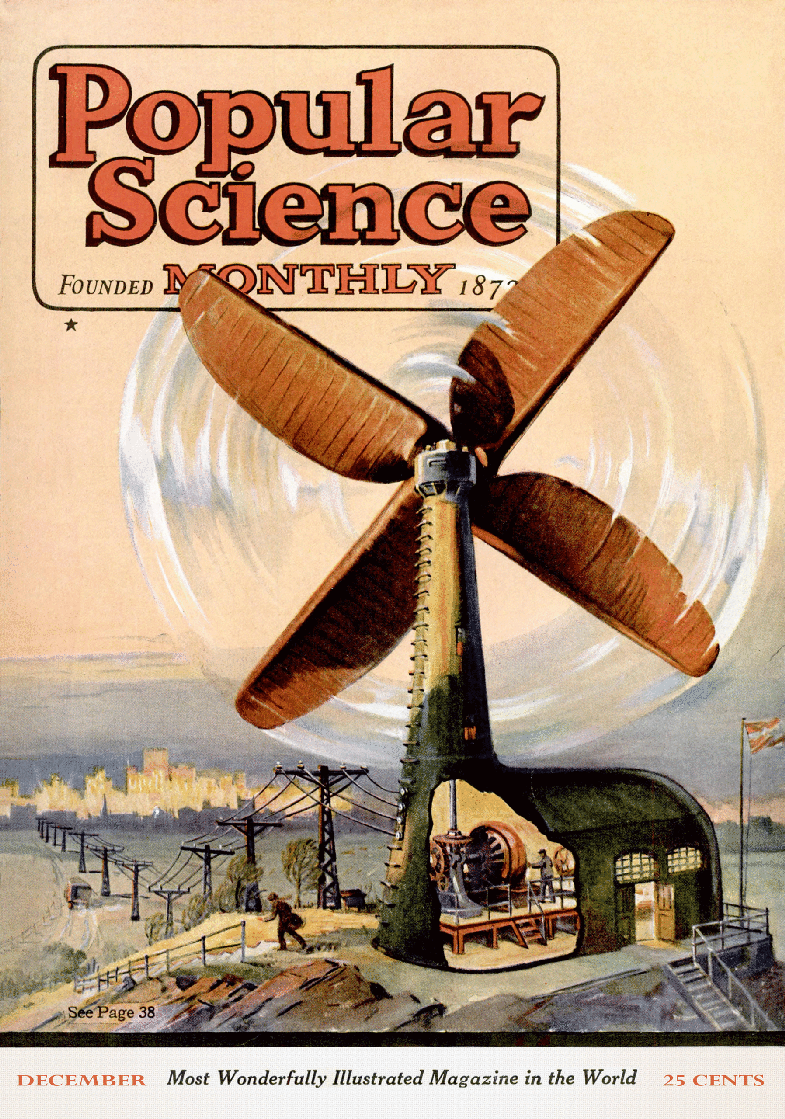From The Archives: Machines That Move With The Wind
How wind turbines are evolving over time

Ever since windmills arrived more than a thousand years ago, engineers have wrestled with how to make them more efficient. As Popular Science observed in December 1923, German manufacturers designed a turbine with blades that revolved around a wheel, which rested on a ball bearing so that they always faced the wind at a right angle. “A breeze barely sufficient to stir the leaves of the trees will set the great wings in motion,” we wrote. And if a gale came, a braking mechanism kept the blades from turning too rapidly.
Now engineers have developed a turbine with blades that bend with the wind to capture more energy. The design also helps to protect the turbine from storm damage. Read more about how it works here.
Slow Growth For High-Power Turbines
When blades started spinning on the first U.S. wind farms in the 1980s, turbines were capable of producing up to a few hundred kilowatts. Today, turbines are 10 times more powerful, but typical capacity has plateaued.

Number of new land-based turbines installed in the U.S., by capacity and year
This article was originally published in the June 2015 issue of Popular Science, under the title “Machines That Follow The Wind.”